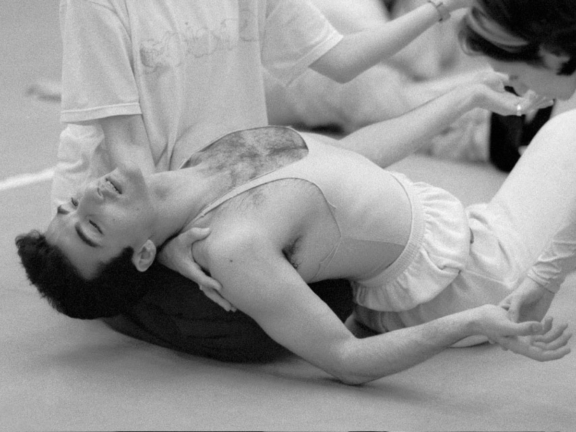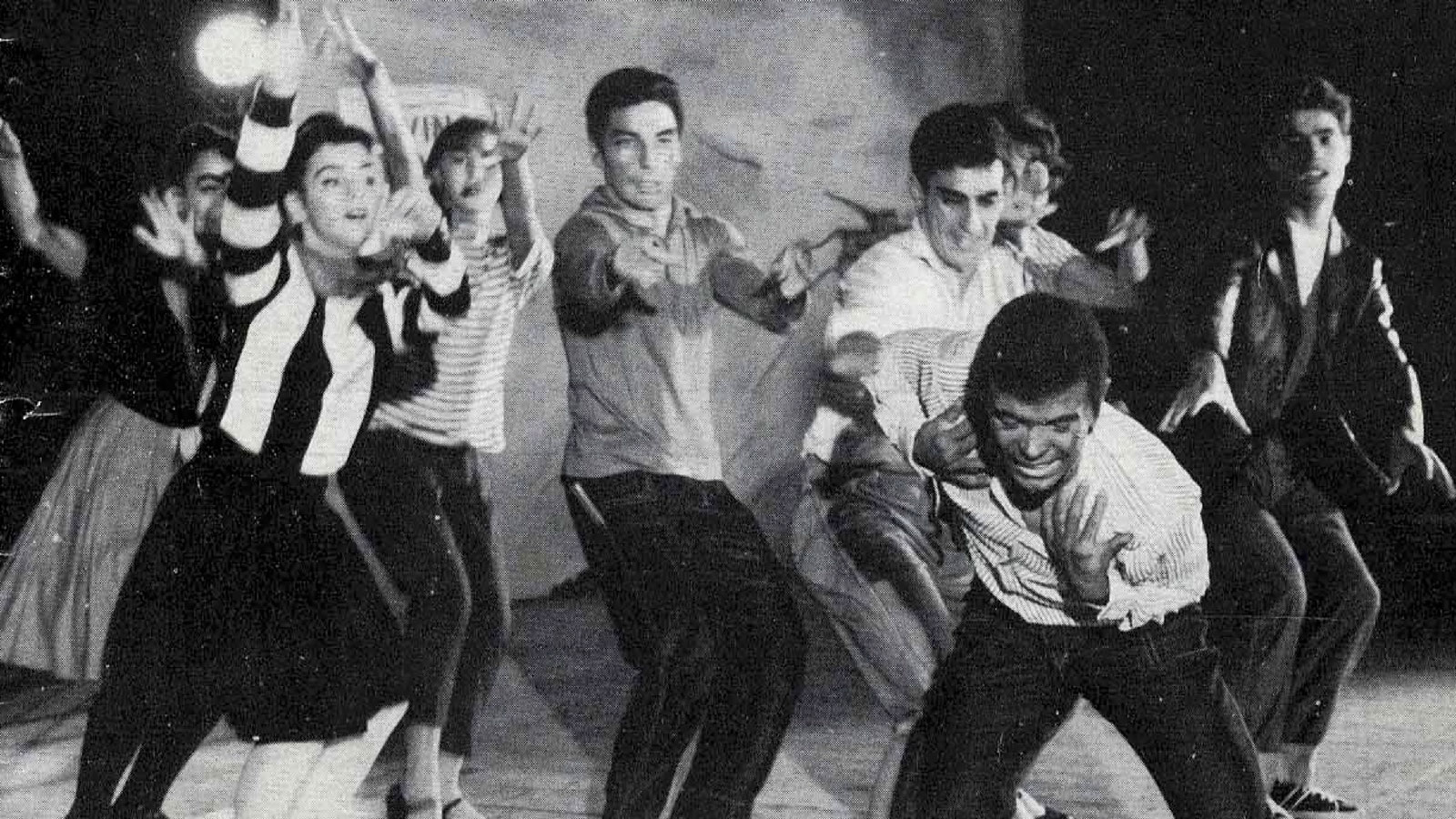
Ritmo/Violento
By André Cabral with the Portuguese Higher School of Dance (ESD), followed by a talk with the artist and the students, moderated by Daniel Tércio
Event Slider
Date
- / Cancelled / Sold out
Location
Main Staircase Calouste Gulbenkian FoundationDuration: 20 min.
“In all big cities, unfortunate incidents have occurred due to the problem of racial segregation. This dance, in four scenes, takes place in a populous area of one such city. A young woman falls in love with a black man which causes an old boyfriend to react with jealousy. The «Teddy-boy» friends of the latter confront the young black man and during the fight that follows, tragedy befalls the group of teenagers. All of the characters have intrinsic value and are treated individually.”
— Norman Dixon’s introduction to Ritmo Violento in the Experimental Ballet Group’s programme from 1961
As part of the dance not dance programme, André Cabral takes on the challenge of reimagining a performance by Norman Dixon in collaboration with the final-year dance students at the Portuguese Higher School of Dance (ESD). Between the two presentations, there is a talk with the artist and the students, moderated by Daniel Tércio.
According to the final pages of Luís de Carvalho e Oliveira’s Problemas do Ballet em Portugal [Problems of Ballet in Portugal] Ritmo Violento, one of the shows performed by the Experimental Ballet Group (GEB) in 1961, has impressed “the audience greatly” at the time. In applauding the dance, the audience “showed it was fundamentally non-racist and against discrimination, racial struggles and in favour of peaceful progress and well-being for whites and blacks”.
During the beginning of the Colonial War, the premiere of GEB, an initiative from CPB [Centro Português de Bailado/Portuguese Ballet Centre] included an urban-inspired piece in the style of West Side Story which critically portrayed a case of racial segregation, with one of the dancers in blackface and amplified rock ‘n’ roll music. A short excerpt of this piece was then recorded for the national news reel and recently rediscovered in the archives of the Portuguese Cinemateca. From that excerpt, André Cabral creates Ritmo/Violento – as well as from Johnny Mandel's music and the criticism of the time placed under the scrutiny of critical thinking about the colonial past and forms of representation of black bodies.
This excerpt is also included in the film Um Corpo que Dança (2022), by Marco Martins, which is screened on the same day, and establishes a link between the history of the Gulbenkian Ballet and recent Portuguese history.
André Cabral (1990, Barreiro) began studying urban dance under the guidance of Vasco Alves. He attended the Portuguese Higher School of Dance (ESD) and did an internship at the Portuguese Contemporary Ballet company, under the direction of Vasco Wellenkamp. He has worked with António Pires, André Mesquita, Clara Andermatt, Rui Horta, Paulo Ribeiro, Marco da Silva Ferreira, Antonio Tagliarini, Miguel Moreira and Victor Hugo Pontes.
Norman Dixon (1926, England – 2020, Croatia) was a dancer, teacher, choreographer and artistic director. In Portugal, he performed for the first time at the end of the 1950s with Margarida de Abreu's Círculo de Iniciação Coreográfica, for which he also choreographed. In 1960, he founded the Ballet Venture in England, for which he choreographed Ritmo Violento. He was a ballet master of the Experimental Ballet Group of the Portuguese Ballet Centre between 1961 and 1963, for which he choreographed several pieces. In 1963, he founded Ballet-Teatro with Águeda Sena.
Daniel Tércio (1954, Aveiro) studied Philosophy, Plastic Arts and History of Art in Lisbon. He has a PhD in Dance from the Faculty of Human Kinetics (FMH), where he taught Dance History, Aesthetics, Movement and Visual Arts. Until 2021, he was a member of the board of the Ethnomusicology Institut, a centre for studies in music and dance. He has published, among other works, Dança e Azulejaria no Teatro do Mundo (1999) and Dançar para a República (2010). Internationally, he is the author of articles such as "Martyrium as Performance" (Performance Research, 15 (1) 2010). As a critic, he has collaborated regularly with the written press since 2004.
dance not dance
This event is included in the (re)performances, films and talks series which constitutes the first part of dance not dance – archaeologies of the new dance in Portugal. More info.
Credits
Choreography
André Cabral
Interpretation
Final year students of the Dance course at the Portuguese Higher School of Dance (ESD) / Polytechnic Institute of Lisbon
Commission and production
dance not dance / Calouste Gulbenkian Foundation
Institutional collaboration
Portuguese Higher School of Dance (ESD)
Based on Ritmo Violento (1961)
Choreography
Norman Dixon
Music
Johnny Mandel
Scenography
Stanley Houghton
Premiere cast
Bernardette Pessanha, Jorge Trincheiras, Isabel Ruth, Carlos Trincheiras, Albino Morais, Isabel Santa Rosa, Manuela Varela Cid, Maria Antonieta, Vera Ribeiro da Silva, Carlos Caldas
The premiere took place on 1 May 1961, by the Experimental Ballet Group of the Portuguese Ballet Centre at the São João Theatre in Porto.
Collaboration
The Calouste Gulbenkian Foundation reserves the right to collect and keep records of images, sounds and voice for the diffusion and preservation of the memory of its cultural and artistic activity. For further information, please contact us through the Information Request form.


